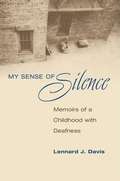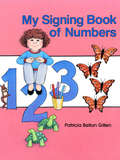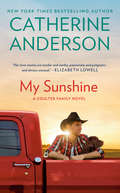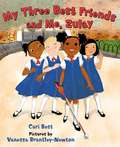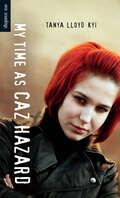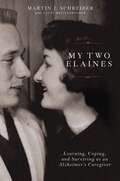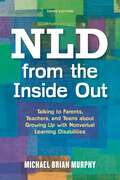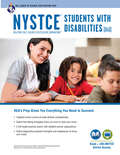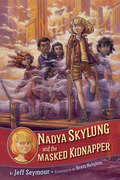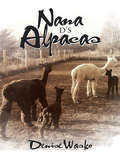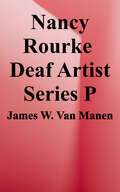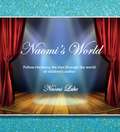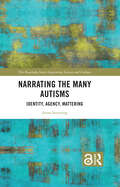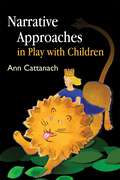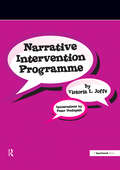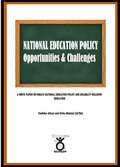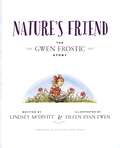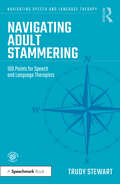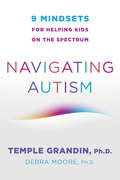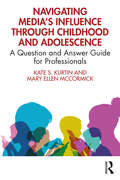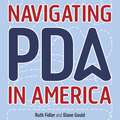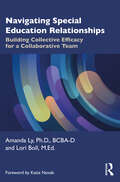- Table View
- List View
My Sense of Silence: Memoirs of a Childhood with Deafness
by Lennard J. DavisLennard J. Davis grew up as the hearing child of deaf parents. In this candid, affecting, and often funny memoir, he recalls the joys and confusions of this special world, especially his complex and sometimes difficult relationships with his working-class Jewish immigrant parents. Gracefully slipping through memory, regret, longing, and redemption, My Sense of Silence is an eloquent remembrance of human ties and human failings.
My Signing Book of Numbers
by Patricia GillenThis full-color picture book helps children learn their numbers in sign language. Each two-page spread of this delightfully illustrated book has the appropriate number of things or creatures for the numbers 0 through 20. The signs for the numbers 30, 40, 50, 60, 70, 80, 90, and 100 are also included. Each sign/number appears in the corner of the page. Written explanations of how to form each sign are provided in the back of the book.
My Sister's Child
by Maggie Kirkman Linda KirkmanThis is the story of the cooperation of two sisters to produce Australia's first surrogate IVF baby. It provides an account of the emotional and legal difficulties encountered by the women and their two families, and their final victory over infertility. The sisters, Maggie and Linda Kirkman, tell their own stories of the pregnancy and birth, and of how they and their families have coped with this unusual situation. They reveal the difficulties and rewards, and the tangled legal situation surrounding Alice's status as Maggie and Sev's daughter.
My Sunshine (Kendrick-Coulter-Harringan #6)
by Catherine AndersonFive years ago, Laura Townsend's life was nearly destroyed when a head injury impaired her ability to use language and forced her to abandon a brilliant career. <P><P> Her vivacious spirit intact, she has found a great new job at an animal clinic-and a handsome new boss who fills her heart with longing. Now he's moving heaven and earth to convince her they belong together, but since she can't fulfill all of his needs, shouldn't she love him enough to walk away? .
My Three Best Friends and Me Zulay
by Cari BestZulay is a blind girl who longs to be able to run in the race on field and track day at her school.
My Time as Caz Hazard: (my Time As Caz Hazard) (Orca Soundings)
by Tanya Lloyd KyiCaz thinks she has a pretty good reason when she punches her boyfriend in the face, but she gets expelled anyway. Moving to a new school, she is told she is dyslexic and sent to special education classes. Caz tries to fit in and get by while suffering the taunts and abuse that others throw at the students in her class. Her friendship with Amanda leads her into new territory—shoplifting and skipping school. Coupled with her parents' impending separation, her life is spiraling out of control. Also available in Spanish.
My Two Elaines: Learning, Coping, and Surviving as an Alzheimer’s Caregiver
by Martin J SchreiberIn My Two Elaines, author Marty Schreiber, former governor of Wisconsin, watches his beloved wife, Elaine, gradually transform from the woman he fell in love with in high school, and who diligently supported his political career, to the Elaine who knows she is declining and can&’t remember how to cook a meal, and finally to the Elaine who no longer recognizes Marty or their children.One part love story, one part practical advice, this compelling book includes several unique elements:Excerpts from Elaine&’s journal, recounting her thoughts, concerns, and frustrations as the disease progressesA recurring feature called &“What I Wish I&’d Known,&” which provides helpful takeaways for caregivers based on Marty&’s observations about what he wishes he&’d known sooner and done differentlyA Q&A between Marty and neuropsychologist Dr. Michelle Braun, to equip caregivers with the right questions to ask and empower them to advocate for their loved ones and their own needsBeyond sincere, practical advice, My Two Elaines gives the reader permission to feel the full spectrum of emotions, including humor, even in the face of this relentless illness. And the book speaks to anyone touched by this disease--spouse, child, friend, or family member.
Mystery at Midnight (Cul-de-Sac Kids #24)
by Beverly LewisChildren's mystery, Grade 2-3, about a blind girl's missing guide dog. Easy chapter book.
NLD from the Inside Out: Talking to Parents, Teachers, and Teens about Growing Up with Nonverbal Learning Disabilities - Third Edition
by Michael Brian MurphyWritten by and for teens and young adults with Nonverbal Learning Disabilities (NLD), as well as for their parents, teachers, therapists, and others who care about them, and backed by the latest neuropsychological research, NLD from the Inside Out offers hundreds of useful tips on: - Organization and planning, including study skills - How to successfully navigate the transition from dependent child to independent adult - Creating more harmonious family and peer relationships - Changing disabling attitudes. The book will help teens and young adults to avoid the angst and pitfalls often associated with NLD. More than that, it offers real stories from now-thriving young adults who grew up with NLD - proof that a full and rewarding life lies ahead for those who are now struggling.
NYSTCE Students with Disabilities (NYSTCE Teacher Certification Test Prep)
by Ann Monroe Baillargeon Michelle Chamblin Dr. Ken SpringerREA's NYSTCE Students with Disabilities (060) Test Prep with Online Practice Tests Gets You Certified and in the Classroom!Fully Up-to-Date for the Current Exam!Nationwide, nearly 300,000 teachers are needed annually, and all must take appropriate tests to be licensed. REA gets you ready for your teaching career with our outstanding library of Teacher Certification test preps.Our test prep is designed to help teacher candidates master the information on the NYSTCE Students with Disabilities (060) exam and get certified. It's perfect for college students, teachers, and career-changing professionals who are looking to become New York State Special Education teachers.Written by teacher education experts, this study package contains in-depth reviews of all the subareas and objectives tested on the NYSTCE Students with Disabilities exam: understanding and evaluating students with disabilities, promoting student learning and development, working in a collaborative professional environment, and more. End of chapter practice quizzes reinforce key concepts.Two full-length practice tests are offered online in a timed format with instant scoring, diagnostic feedback, and detailed explanations of answers. Each test features every type of question, subject area, and skill you need to know for the exam. Our online practice tests replicate the NYSTCE question format, allowing you to assess your skills and gauge your test-readiness.The online tests at REA's Study Center offer the most powerful scoring and diagnostic tools available today. Automatic scoring and instant reports help you zero in on the topics and types of questions that give you trouble now, so you'll succeed when it counts. Every practice exam comes with detailed feedback on every question. The book includes the same two practice tests that are offered online, but without the added benefits of detailed scoring analysis and diagnostic feedback. This complete test prep package comes with a customized study schedule and REA's test-taking strategies and tips. This test prep is a must-have for anyone who wants to teach students with disabilities in New York!
Nadya Skylung and the Masked Kidnapper
by Jeff SeymourIn this middle-grade sequel to Nadya Skylung and the Cloudship Rescue, author Jeff Seymour and bestselling illustrator Brett Helquist deliver another breathtaking fantasy adventure, starring an extraordinary heroine and set in an unforgettable world where ships can fly.Nadya Skylung paid a high price when she defeated the pirates on the cloudship Remora: She lost her leg. But has she lost her nerve too? When Nadya and the rest of the crew of the cloudship Orion reach the port of Far Agondy, they have a lot to do, including a visit to Machinist Gossner's workshop to have a prosthetic made for Nadya. But though the pirates are far away across the Cloud Sea, Nadya and her friends are still not safe. A gang leader called Silvermask is kidnapping skylung and cloudling children in Far Agondy. When Nadya's friend Aaron is abducted, Nayda will stop at nothing to save him and the other missing kids, and put a stop to Silvermask once and for all."An entertaining and engaging fantasy adventure that deals sensitively with the topic of disability. Will appeal to late elementary and early middle school fans of Rick Riordan's Percy Jackson series and similar middle grade speculative fiction." --School Library Journal
Nana D's Alpacas
by Denise WaskoMs. Emily and her preschool classroom take an adventurous trip to learn more about alpacas. Come along on the journey to discover how curiosity and investigation lead to a love of outdoor learning.
Nancy Rourke (Deaf Artist Series)
by James W. Van ManenNancy Rourke: Deaf Artist Series by Empyreal Press (empyrealpress.com), is the first book ever published about Nancy Rourke, a Deaf oil painter who works in the De’VIA (Deaf View Image Art) genre. <p><p>Its pages are filled with vibrant images in Rourke’s trademark primary colors, along with descriptions of art and biography. Rourke’s affinity for art dates to her childhood, when she started drawing as a means to communicate with her parents. Though she has created art for over forty years, Rourke’s present style evolved in 2010 when her artwork began reflecting the Deaf View/Image Art (De’VIA) themes of affirmation, resistance and liberation. <p><p>In the book, Van Manen not only explains the origins of Rourke's paintings, but also accounts for her remarkable success as an artist in the years since adopting De’VIA themes. Nancy Rourke: Deaf Artist Series is a wonderful educational resource for art enthusiasts, and for aspiring artists, and for people interested in Deaf Culture or De’VIA art. <p><p>This series brings attention to the artwork and lives of contemporary Deaf visual artists who are important to the Deaf Art Movement and De’VIA (Deaf View / Image Art). These are Deaf artists who place a perspective on their artwork which relates to American Sign Language, Deaf heritage and Deaf culture. Each book contains biography, art interpretation and some art description. The availability of this important series offers readers an insight into the world of culturally Deaf people through their artists. Furthermore, the series serves as a useful guide for art historians, curators, and docents in recognizing Deaf Art/De’VIA’s contribution to American art.
Naomi's World: Follow Harmony the Hen through the world of children’s author Naomi Lake
by Naomi LakeThis book, brought to you by Carers WA, dives into the challenges young people may have with disabilities. No matter what you face in life or the challenges it brings you, stay strong and never give up on your dreams. Naomi is a children's author in Albany, Western Australia who has published two books about Harmony the Hen. She is also an ambassador for Down Syndrome WA. "Being a role model for others and encouraging children to read and write is a passion of mine because it has opened up the world for me. I love learning and trying new things whenever I have the opportunity. You just have to go out to explore the world because the world won’t come to you.”
Narrating the Many Autisms: Identity, Agency, Mattering
by Anna StenningAutism is a profoundly contested idea. The focus of this book is not what autism is or what autistic people are, but rather, it grapples with the central question: what does it take for autistic people to participate in a shared world as equals with other people? Drawing from her close reading of a range of texts, by autistic authors, filmmakers, bloggers, and academics, Anna Stenning highlights the creativity and imagination in these accounts and also considers the possibilities that emerge when the unexpected and novel aspects of experience are attended to and afforded their due space. Approaching these narrative accounts in the context of both the Anthropocene and neoliberalism Stenning unpacks and reframes understandings about autism and identity, agency and mattering, across sections exploring autistic intelligibility, autistic sensibility, and community-oriented collaboration and care. By moving away from the non-autistic stories about autism that have, over time, dominated public conception of the autistic experience and relationships, as well as the cognitive and psychoanalytic paradigms that have reduced autism and autistic people to a homogeneous group, the book instead reveals the multiplicity of autistic subjectivities and their subsequent understandings of oppression. It calls on readers to listen to what autistic people have to say about the possibilities of resistance and solidarity against intersecting currents and eddies of power, which endanger all who challenge the neoliberal conception of Life. A stirring and meaningful departure from atomized accounts of neurological difference, Narrating the Many Autisms ponders big questions about its topic and finds clarity and meaning in the sense-making practices of autistic individuals and groups. It will appeal to scholarly readers across the fields of disability studies, cultural studies, critical psychology, sociology, anthropology, and literature. The Open Access version of this book, available at http://www.taylorfrancis.com, has been made available under a Creative Commons [Attribution-Non Commercial-No Derivatives (CC-BY-NC-ND)] 4.0 license.
Narrative Approaches in Play with Children
by Ann Cattanach Alison WebsterNarrative play is a way of communicating with children using imaginative stories and narratives to share and make sense of life events. This book describes using narrative play therapeutically with children who have lived in multiple families, children who have problems with social understanding and children who have learning difficulties. Ann Cattanach explains how children's stories and narratives, whether they are about real or imagined events, can be interpreted as indicators of their experiences, their ideas, and a dimension of who they are. She demonstrates this with examples of children's stories from her clinical experience, and provides narrative play techniques and sample scripts both for therapists and for parents whose circumstances require a therapeutic parenting approach. This book is essential reading for play therapists, social workers and other professionals working with children, as well as parents and carers of children who are experiencing social and/or learning difficulties.
Narrative Intervention Programme
by Victoria JoffeThis book improves the understanding and telling of stories in secondary school students and young adults. Specifically designed for older children and young adults, this practical language programme was created by a specialist speech & language therapist with input from secondary school teachers and students. It focuses on enhancing the understanding and expression of stories in students aged from 8 to 18 with language and communication difficulties, and aims to: create an awareness of how storytelling can be used to enhance learning in school and social interactions in school and home environments. It facilitates storytelling. It enhances the joy and enjoyment in telling stories. It identifies different types of narratives and provide examples for each type. It encourages effective listening and attention skills. It examines different means of making story production more interesting through vocal variety, body language and print. It encourages the use of the story planner in planning and structuring essays in the classroom and for homework. Dr Victoria Joffe is a specialist speech and language therapist and senior lecturer in developmental speech, language and communication impairments in the Department of Language and Communication Science at City University, London. Victoria runs various workshops for PCT's, LEA's and schools on child speech disorder, evidence based practice in speech and language therapy and collaborative practice in education and provides training for therapists and teaching staff on working with children and young adults with speech, language and communication needs in education. Victoria is currently involved in a large scale intervention project funded by the Nuffield Foundation on enhancing language and communication in secondary school children with language impairments on which this programme is based.
National Education Policy - Opportunities & Challenges: A White Paper on India’s National Education Policy and Disability Inclusive Education
by National Centre for Promotion of Employment for Disabled PeopleThis white paper addresses the need for inclusive education in India, considering the New Education Policy (2020) and policy milestones such as the UN Convention on the Rights of Persons with Disabilities (UNCRPD) and the Rights of Persons with Disabilities Act (2016). It highlights challenges, including low enrollment rates, gender disparities, lack of policy guidance on special schools, and inadequate training for teachers. Recommendations include strengthening policy implementation, increasing enrollment rates, addressing gender disparities, developing a comprehensive policy framework for special schools, improving teacher training and selection, maintaining infrastructure standards, increasing budgetary allocations, and expanding funds for a wider range of educational needs. Implementing these recommendations will promote an inclusive education system in India, empowering children with disabilities and ensuring equal opportunities.
Nature and Treatment of Stuttering
by Richard F. Curlee William H. PerkinsDoctors Richard E. Curlee and William H Perkins delve into the causes of stuttering and suggest tips to deal with stuttering.
Nature's Friend: The Gwen Frostic Story
by Lindsey McDivittGwen Frostic sought solace in art and nature. She learned to be persistent and independent - never taking no for an answer or letting her disabilities define her. An artist and business owner, Gwen dedicated her work and her life to reminding people of the wonder and beauty in nature.
Navigating Adult Stammering: 100 Points for Speech and Language Therapists (Navigating Speech and Language Therapy)
by Trudy StewartThis book, the first in an exciting new series, provides speech and language therapy students and newly qualified and beginning stammering specialists with 100 key points that will help form a strong foundation for their work supporting adults and teenagers who stammer. Composed of practical, relevant and useful advice from an experienced clinician, chapters break advice down into sections which include information about the therapeutic relationship, therapeutic approaches and signposts to further resources. Throughout the book, comments from stammering specialists describe what they wish they had known at the start of their careers. This book: Puts the person who stammers at the heart of therapy, following the clinical choices they might make Is written in an accessible style, designed to be dipped in and out of as required Draws on the experience of therapists working with those who stammer Full of advice and guidance to support effective practice, this is an essential resource for anybody new to this client group.
Navigating Autism: 9 Mindsets For Helping Kids on the Spectrum
by Temple Grandin Debra MooreEmpowering strategies for anyone who works with children and teens on the spectrum. International best-selling writer and autist Temple Grandin joins psychologist Debra Moore in presenting nine strengths-based mindsets necessary to successfully work with young people on the autism spectrum. Examples and stories bring the approaches to life, and detailed suggestions and checklists help readers put them to practical use. Temple Grandin shares her own personal experiences and anecdotes from parents and professionals who have sought her advice, while Debra Moore draws on more than three decades of work as a psychologist with kids on the spectrum and those who love and care for them. So many people support the lives of these kids, and this book is for all of them: teachers; special education staff; mental health clinicians; physical, occupational, and speech therapists; parents; and anyone interacting with autistic children or teens. Readers will come away with new, empowering mindsets they can apply to develop the full potential of every child.
Navigating Media’s Influence Through Childhood and Adolescence: A Question and Answer Guide for Professionals
by Kate S. Kurtin Mary Ellen McCormickNavigating Media’s Influence Through Childhood and Adolescence moves through research and questions that are relevant to practicing pediatricians and therapists in their everyday practice. As we navigate post-pandemic life where screen time was unrestricted in most homes, this book has never been more important. Written by a pediatrician and a professor of media effects, this book is a vital resource for practicing mental health clinicians, counselors, psychologists, physicians, and students studying in those areas. Grounded in developmental theory, mass communication theory, current research, and acumen gained from years of clinical and teaching experience, this book gives professionals what they need to understand the colossal effect media is having on their patients. An aid to practitioners, this book is organized by developmental stage and matches specific questions related to media’s effects with explicit research-based recommendations and explanations. It is intended to be a quick resource guide for the busy professional.
Navigating PDA in America: A Framework to Support Anxious, Demand-Avoidant Autistic Children, Teens and Young Adults
by Ruth Fidler Diane GouldAlthough Pathological Demand Avoidance (PDA) has been a recognized autistic profile in the UK for some time, awareness is still growing in America. When parents first learn about it they talk about having a lightbulb moment of understanding their child better. Many described how, having found traditional parenting and behavioral techniques made things worse instead of better, they felt judged and alone. Teachers and school administrators also reported struggling to support their PDA students. The children, teens and young adults themselves were often left feeling misunderstood.The authors of this book explain PDA with an emphasis on promoting well-being both for PDA individuals and all those who support them. They provide a neurodiversity-affirming framework for supporting anxious, demand avoidant individuals across a range of settings and services. As awareness spreads across the pond, the compassion and clarity in this book will become a valuable guide to many.
Navigating Special Education Relationships: Building Collective Efficacy for a Collaborative Team
by Amanda Ly Lori BollTold through a series of real-life stories and hard-learned lessons, Amanda Ly and Lori Boll share the challenges in special education relationships experienced through the lens of a special educator, a parent of a son with profound disabilities, and a child psychologist.Ideally, teachers, therapists, and parents working with students with special needs should form a cohesive team. However, these three parties often function as separate entities with different goals and objectives. Over the past 25 years, the authors have observed a consistent pattern of miscommunication and overlooking the importance of the mental and physical well-being of each team member, which contributed to poor collaboration. This book takes readers on a journey through the process of discovering whether you have, or are working with, a student with special needs; navigating how to best work with the student and other members of the team; and lastly, discussing ways to empower the reader and all members of the team. The authors posit that if we understand one another's perspectives, learn how to communicate more effectively, and focus on self-care, we will increase Collective Efficacy and become the collaborative team our students need us to be.As the first book to connect the concept of Collective Efficacy to special education, this is a must-read for teachers, therapists, and parents aiming to grasp the complexities of relationships in special education teams and better understand how mental health influences the effectiveness of each individual’s role.
